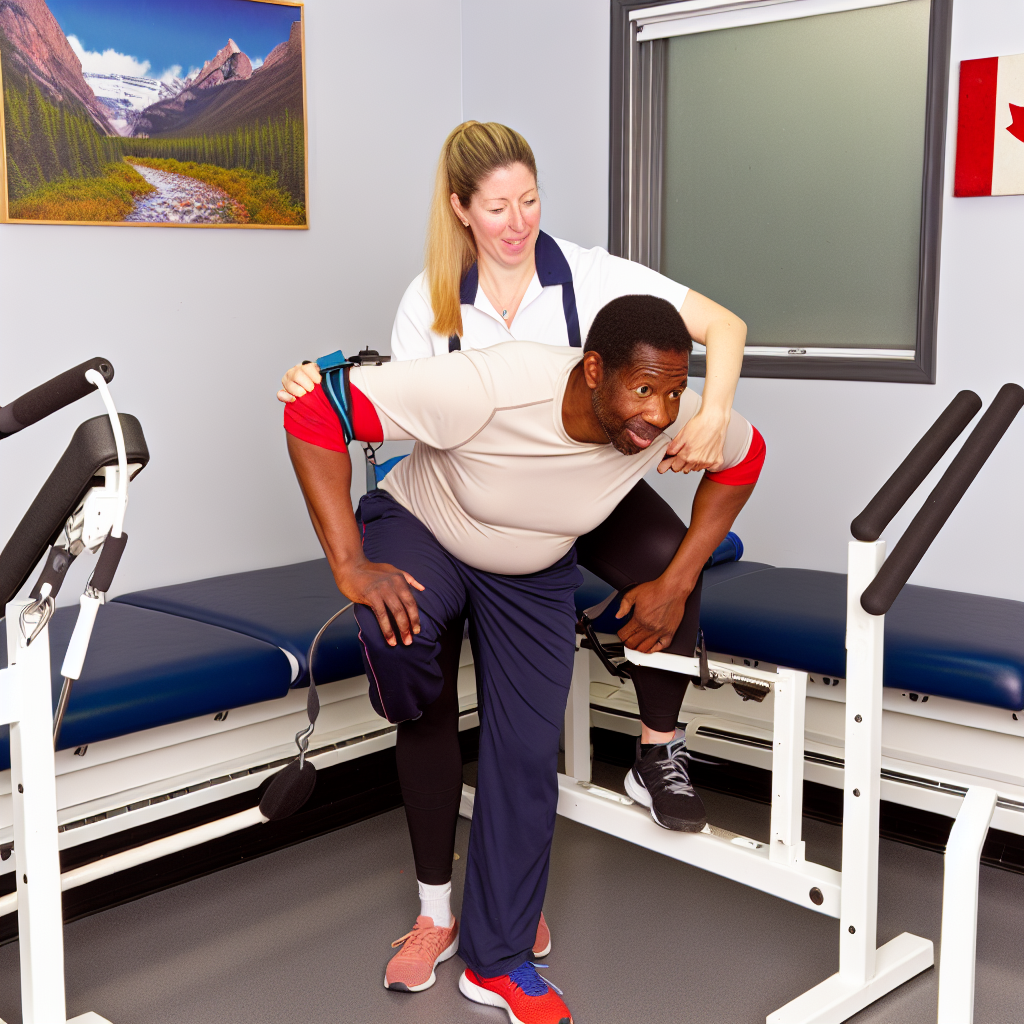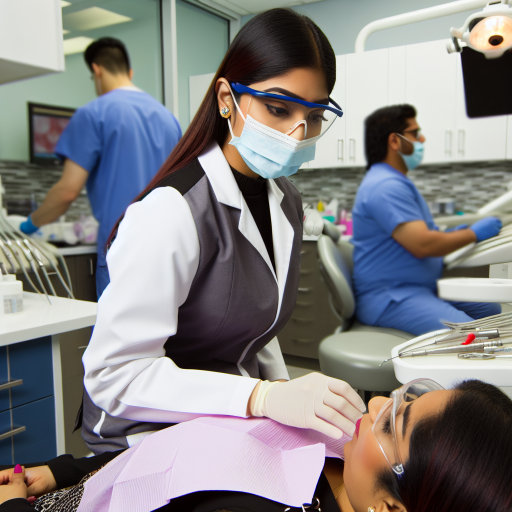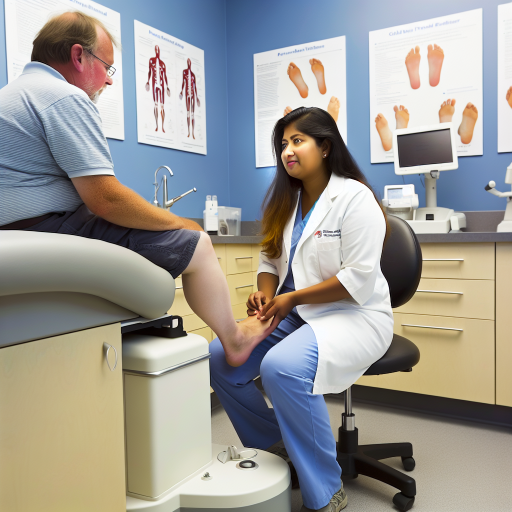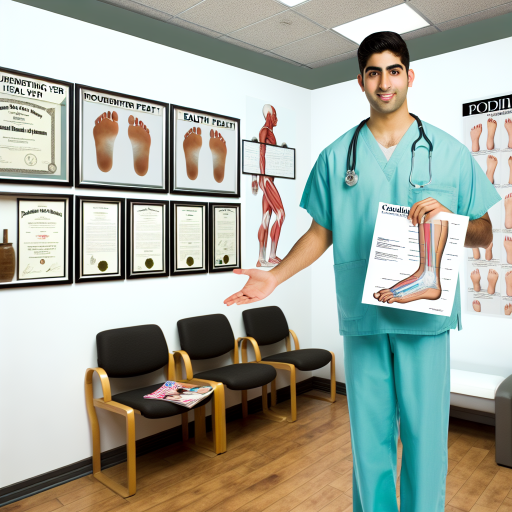Introduction to Kinesiology and Its Role in Enhancing Mobility
Kinesiology focuses on the science of human movement.
This field studies how muscles, joints, and nerves work together.
Through kinesiology, therapists can identify movement problems.
They develop strategies to improve physical function and mobility.
Overall, kinesiology plays a vital role in rehabilitation.
Understanding Kinesiology’s Impact
Kinesiology helps people regain strength after injury.
Moreover, it enhances athletic performance for active individuals.
The approach includes assessments and customized exercise plans.
These plans promote efficient movement patterns and posture.
As a result, clients often experience less pain and more comfort.
Benefits of Kinesiology for Daily Mobility
Improved mobility leads to a better quality of life.
Individuals can perform daily activities with greater ease.
For instance, tasks like walking and climbing stairs become simpler.
In addition, kinesiology aids in preventing injuries during activities.
Regular movement helps maintain joint health and flexibility.
Applications in Clinical Settings
Kinesiology practices are beneficial in clinical settings.
Therapists utilize movement assessments to determine limitations.
They design tailored interventions to address specific needs.
This individualized approach ensures effective recovery strategies.
Consequently, patients often achieve remarkable improvements.
Integrating Kinesiology into Exercise Routines
Integrating kinesiology into workouts enhances overall fitness.
Knowledge of biomechanics helps optimize exercise techniques.
Proper movement reduces the risk of injury during workouts.
Additionally, beneficial exercises can empower individuals to progress.
With regular practice, mobility and strength improve significantly.
Unlock Your Career Potential
Visualize a clear path to success with our tailored Career Consulting service. Personalized insights in just 1-3 days.
Get StartedUnderstanding Mobility
Definition of Mobility
Mobility refers to the ability to move freely and easily.
It involves various physical activities like walking, running, and climbing.
Moreover, mobility encompasses maintaining balance and coordination.
Effective mobility is essential for daily activities and tasks.
The Importance of Mobility in Daily Life
Enhanced mobility significantly contributes to overall quality of life.
It allows individuals to engage in social and recreational activities.
Additionally, mobility supports independence and self-sufficiency.
When individuals can move without restrictions, they experience enhanced mental health.
Mobility also plays a key role in reducing fall risks among the elderly.
Linking Mobility to Healthy Living
Regular physical activity improves mobility over time.
Increased mobility encourages a more active lifestyle.
This, in turn, reduces the risk of chronic diseases.
Furthermore, better mobility facilitates weight management and improves overall health.
A focus on mobility can lead to increased longevity and vitality.
The Impact of Kinesiology on Physical Rehabilitation and Injury Prevention
Enhancing Recovery through Kinesiology
Kinesiology plays a vital role in physical rehabilitation.
It helps individuals regain strength after injuries.
Moreover, it promotes effective movement strategies.
This field focuses on understanding body mechanics.
Consequently, it identifies muscular imbalances and weaknesses.
With personalized programs, recovery becomes faster.
Additionally, kinesiology emphasizes functional exercises.
These exercises simulate real-life movements.
As a result, clients can adapt to daily activities more easily.
Preventing Future Injuries
Kinesiology is also crucial for injury prevention.
It assists in recognizing risk factors for injuries.
This proactive approach minimizes potential harm.
Through tailored assessments, professionals evaluate flexibility levels.
They also address strength discrepancies among various muscle groups.
For instance, a balanced workout regimen can reduce strain.
Consequently, clients become more resilient against injuries.
Moreover, they learn safe techniques for various activities.
This knowledge empowers them in sports and fitness routines.
Real-Life Applications in Rehabilitation
Clinical settings use kinesiology to guide rehabilitation.
For example, therapists often incorporate biofeedback techniques.
This method enhances awareness of body movement.
Furthermore, therapists implement exercise interventions.
These interventions facilitate the healing process.
For instance, aquatic therapy can offer low-impact exercise.
As patients progress, more challenging activities are introduced.
Such progressions are essential for complete rehabilitation.
Collaborative Care Approach
Kinesiology often involves teamwork among healthcare professionals.
Collaboration between physiotherapists and kinesiologists enhances care.
For instance, this partnership creates comprehensive treatment plans.
Furthermore, regular communication ensures optimal recovery outcomes.
Clients benefit from this integrated approach significantly.
They receive more support and guidance throughout the process.
Ultimately, it contributes to improved mobility.
Clients report a better quality of life due to these interventions.
You Might Also Like: Why Athletes Depend on Podiatrists for Peak Performance
How Kinesiology Assessments Improve Mobility
Understanding Kinesiology Assessments
Kinesiology assessments evaluate movement and muscle function.
These assessments begin with a thorough client consultation.
During this consultation, practitioners gather personal health information.
This information helps practitioners understand the client’s specific needs.
Performing Movement Analysis
Next, practitioners conduct a detailed movement analysis.
This analysis identifies any restrictions or weaknesses in mobility.
Practitioners observe the client’s posture, gait, and range of motion.
They often utilize video recordings for better assessment accuracy.
Additionally, they may employ specific testing protocols.
Utilizing Functional Tests
Functional tests challenge the client’s physical abilities.
These tests measure strength, flexibility, and coordination.
Practitioners may use tools like resistance bands or balance boards.
The results help formulate customized rehabilitation programs.
Setting Goals and Developing Plans
Based on assessments, practitioners set realistic mobility goals.
These goals ensure clients have clear targets to achieve.
Subsequently, they develop personalized exercise plans.
These plans focus on improving specific areas of mobility.
Regular follow-ups allow for adaptations to the plan as needed.
Monitoring Progress
Continuous monitoring is essential to effective kinesiology practice.
Practitioners regularly assess clients to track improvements.
They make necessary adjustments to keep the recovery on track.
This ongoing feedback loop enhances client motivation.
Ultimately, it ensures better outcomes in mobility and quality of life.
See Related Content: How Podiatrists Diagnose and Treat Foot Disorders
Techniques Used in Kinesiology to Enhance Joint Function and Flexibility
Overview of Kinesiology Techniques
Kinesiology encompasses various techniques targeting mobility improvement.
These methods focus on enhancing joint function and overall flexibility.
Practitioners often use personalized approaches to cater to individual needs.
Manual Therapy
Manual therapy plays a vital role in kinesiology treatment.
It involves hands-on techniques to manipulate soft tissues and joints.
This method enhances blood circulation and reduces muscle tension.
As a result, patients experience increased range of motion.
Stretching Exercises
Stretching exercises significantly improve flexibility.
They help alleviate stiffness in the muscles and joints.
Dynamic stretching prepares muscles for movement.
Static stretching aids in long-term flexibility gains.
Therapists guide individuals through tailored stretching routines.
Strength Training
Strength training enhances stability around joints.
It minimizes the risk of injury during physical activities.
Kinesiologists create specific programs based on individual capabilities.
Strengthening exercises target various muscle groups effectively.
Functional Movement Training
Functional movement training improves everyday activities.
By mimicking daily tasks, it boosts coordination and balance.
This technique enhances the body’s ability to perform efficiently.
Therapists often assess movements to formulate effective training plans.
Neuromuscular Re-education
Neuromuscular re-education helps restore proper movement patterns.
This technique involves repeating movements to establish muscle memory.
It is particularly useful after injuries or surgeries.
Practitioners guide patients to re-learn safe and effective movements.
Education and Self-Management
Educating patients is essential for long-term success.
Kinesiologists teach individuals about their body mechanics.
Self-management strategies empower patients to maintain progress.
Patients learn to identify signs of strain and overuse.
Gain More Insights: Common Questions To Ask Your Audiologist
The Relationship Between Kinesiology and Overall Health and Well-Being
The Role of Kinesiology in Physical Activity
Kinesiology studies human movement in various contexts.
It emphasizes improving physical abilities through tailored exercises.
This approach enhances flexibility and strength significantly.
Consequently, individuals experience increased functional capacity.
Kinesiology’s Impact on Mental Health
Physical activity positively influences mental well-being.
Regular exercise reduces symptoms of anxiety and depression.
Kinesiology interventions enhance mood and cognitive function.
As a result, individuals often report improved quality of life.
Improving Mobility Through Kinesiology
Mobility is crucial for daily living and independence.
Kinesiology focuses on joint function and muscle coordination.
By assessing movement patterns, experts design effective plans.
These tailored plans significantly improve overall mobility.
Promoting Long-Term Health Benefits
Engaging in kinesiology improves cardiovascular health.
It lowers the risk of chronic diseases such as diabetes.
Moreover, regular physical activity boosts the immune system.
These factors contribute to a longer, healthier life.
Holistic Approaches in Kinesiology
Kinesiology integrates physical, emotional, and social well-being.
This holistic approach fosters comprehensive health benefits.
It also encourages healthier lifestyle choices and habits.
Ultimately, kinesiology enhances overall life satisfaction and enjoyment.
Uncover the Details: Common Misconceptions About the Dental Profession

Real-life Case Studies Showcasing Improved Mobility Through Kinesiology
Case Study of Michael
Michael, a 52-year-old man, struggled with chronic knee pain.
His mobility significantly decreased due to arthritis.
He began kinesiology sessions focusing on joint mobilization techniques.
After several weeks, Michael reported noticeable improvement in pain levels.
In just two months, he regained his ability to walk without a limp.
Now, he enjoys hiking with his family again.
Case Study of Sarah
Sarah, a 34-year-old athlete, suffered from a shoulder injury.
She sought kinesiology therapy to regain her competitive edge.
The kinesiology sessions incorporated strength training and flexibility exercises.
As a result, her shoulder regained strength and mobility.
Within three months, Sarah returned to her sport at full capacity.
Now, she competes and trains without any pain or limitations.
Case Study of George
George is a 64-year-old retiree with mobility issues from years of inactivity.
He faced difficulties climbing stairs and getting up from his chair.
Through kinesiology, George participated in tailored exercise programs.
These focused on functional movement and strength building.
Over six months, he dramatically improved his daily activities.
Now, George enjoys gardening and going for walks in the park.
Case Study of Emily
Emily, a 28-year-old dancer, dealt with hip mobility issues.
Her passion for dancing was diminishing due to discomfort.
She turned to kinesiology for targeted rehabilitation.
The program included specific stretches and strengthening exercises.
Before long, Emily regained her full range of motion.
Currently, she is back in dance classes with increased confidence.
Case Study of David
David, a 45-year-old office worker, had developed severe back pain.
Long hours of sitting affected his posture and mobility.
He engaged in kinesiology to address his posture and flexibility.
With consistent effort, David noticed his mobility improved remarkably.
Now, he participates in regular physical activities without back pain.
His overall quality of life has enhanced significantly.
The Role of Kinesiology in Promoting Active Aging and Quality of Life
Understanding Kinesiology
Kinesiology studies human movement and physical activity.
It emphasizes the body's mechanics and physiological responses.
Consequently, kinesiologists help clients improve mobility.
Enhancing Mobility Through Customized Programs
Kinesiologists develop tailored exercise plans for individuals.
These programs focus on flexibility, strength, and balance.
Clients experience decreased pain and increased range of motion.
Moreover, regular movement can prevent injury and complications.
Promoting Active Aging
Active aging encourages older adults to stay physically active.
Kinesiology helps this demographic maintain independence.
Age-related decline in strength and flexibility can be managed.
Thus, seniors can enjoy an improved quality of life.
The Connection Between Movement and Mental Health
Physical activity can enhance mental well-being significantly.
Kinesiology supports holistic health approaches through exercise.
Aerobic exercises, for instance, can reduce anxiety and depression.
Furthermore, community classes foster social interaction and support.
Case Studies of Successful Kinesiology Interventions
Various case studies highlight kinesiology's effectiveness.
For example, Sarah, a 70-year-old retiree, regained her mobility.
After following a specialized program, she felt more energetic.
Similarly, a local senior center reported improved attendance and engagement.
Importance of Embracing Kinesiology
Ultimately, kinesiology plays a crucial role in enhancing life quality.
It promotes mobility and encourages active lifestyles for all ages.
Moreover, regular exercise can lead to healthier, happier lives.
Future Trends in Kinesiology
Innovations in Technology
Technology continues to reshape kinesiology practices.
Wearable devices track movement and performance in real time.
Advanced algorithms analyze data to suggest personalized exercises.
Moreover, virtual reality offers immersive rehabilitation experiences.
This engages users and motivates them to improve mobility.
Research Advancements
Ongoing research focuses on the biomechanics of human motion.
This research helps to identify optimal movement patterns.
Additionally, new studies explore the impact of environmental factors.
Understanding these influences can lead to enhanced mobility solutions.
Collaboration with Healthcare Professionals
Collaboration among healthcare providers is on the rise.
Multidisciplinary teams create holistic rehabilitation plans.
Physical therapists, occupational therapists, and kinesiologists work together.
This cooperation improves patient outcomes and enhances quality of life.
Adaptive Equipment Development
The development of adaptive equipment is gaining momentum.
Innovative tools enhance mobility for individuals with disabilities.
Examples include customized wheelchairs and smart prosthetics.
These advancements empower users and promote independence.
Holistic Approaches to Wellness
Future kinesiology trends emphasize holistic health approaches.
Mental wellness interventions complement physical therapy techniques.
Mindfulness practices and stress management enhance overall well-being.
Furthermore, promoting community fitness initiatives fosters social engagement.
Additional Resources
Hackney’s Neurokinesiology Laboratory | Emory School of Medicine




